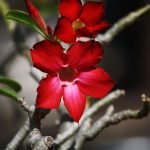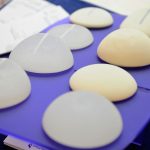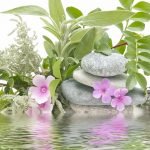Centella Asiatica: Herb of the Crown Chakra
Robin DiPasquale, ND, RH (AHG)
Many years ago, Bill Mitchell, ND, used to teach about choosing herbs for working with each of the 7 chakras. Each chakra center has its own very particular energy circuit, and the herbs chosen are to open and move those energies. Listed here are Dr Mitchell’s choices for each chakra, although there are certainly other herbs to be considered for each energy center; we are not limited to just these.
- Stellaria media: 1st chakra, root chakra; magnetic field connecting to the earth
- Cimicifuga racemosa (Actea racemosa): 2nd chakra, creative center; gonads
- Glycyrrhiza glabra: 3rd chakra, the hara, energy center; adrenal glands
- Crataegus oxycantha/monogyna: 4th chakra, heart center, place of joy and sadness; heart
- Verbena hastata/officinalis: 5th chakra; throat, thyroid gland
- Ginkgo biloba: 6th chakra, 3rd eye; pituitary gland
- Centella asiatica: 7th chakra, crown chakra; pineal gland
This article will be focusing on the crown chakra and the herb Centella asiatica because of the deep connection that this chakra and this herb have to the nervous system and all neurological manifestations.
A Bit About the Crown Chakra
The chakras metabolize life energy – prana – from nature. They are a direct pipeline to the human neural network, influencing the central nervous system (CNS), hormonal balance, and the skin.1 While the root chakra connects us to the magnetic field of the earth, the crown chakra is the portal that opens to the heavens, to the electrical field beyond the earth, out into the universe. The crown chakra reaches to the light of the sun and the illumination of the stars, and is the entry point for the life force, the Vis, coming down and bathing the entire chakra system, nourishing the body, mind, and spirit. The heavens propel us toward what our destiny calls forth, to living our full potential.
Opening the crown chakra deepens our awareness of a spiritual connection with the cosmos, thereby allowing our spirituality to become an integral part of our physical lives. It is the energy center for spiritual insight, vision, and intuition far beyond human consciousness. It is the center of prayer and devotion, enabling us to gain an internal awareness through meditation and prayer, of inner guidance, insight into healing, and a trust in the divine in everything we do.
In Sanskrit, the name for the crown chakra is sahasrara, the thousand-petal lotus flower. Sahasrara means “emptiness.”1 In the Tree of Life of the Kabbalah, the sefirah (emanation) connected to the crown chakra is Keter, which represents “nothingness” – the energy from which physical manifestation begins. It is thought to be eternal, with no beginning and no end.2 Both emptiness and nothingness reflect the state of just being – not in the past and not in the present, but just being where you are in the moment.
Rose essential oil is thought to have the highest spiritual frequency of all the essences. Frankincense can help bring about meditative contemplation, while sandalwood is used to quiet the mind.3 Alternate-nostril breathing is a pranayama technique to open the crown chakra, and the yoga poses of headstand, downward dog, and fish pose – all putting the crown chakra to the floor – stimulate the 7th chakra. The gems of amethyst, selenite, and sugilite are recommended to wear or hold when working the crown chakra.3
The pineal gland is the component of our glandular network that is influenced and has influence via the CNS to the rest of the body. The pineal gland is responsive to the cycle of light and darkness. The melatonin it secretes, which is stimulated by darkness, plays a role in sleep-wake cycles, and although we still know little about melatonin’s broader influences in the body, research is beginning to elucidate numerous other functions.4
Centella Asiatica & the Crown Chakra
Now let’s look at the herb that supports mental function and which opens and works the crown chakra – Centella asiatica.
In Ayurvedic medicine, there are 2 herbs that are referred to as Brahmi, which means “god-like,” reflecting the great respect for both herbs, as well as their use in enhancing meditation. According to Baba Hari Dass, the stronger Brahmi is Bacopa monniera, or water hyssop, and the weaker Brahmi is Centella asiatica, also named Mandukaparni or gotu kola. Both herbs support mental function, targeting the brain and the nerves, but are energetically quite different from each other.5
Bacopa monniera
Bacopa monniera is used more in south India, is more bitter, colder, and has more qualities of detoxification than Centella. It is said to be more specific in treating mental diseases, including anxiety, depression, epilepsy, and other out-of-balance mental illnesses.5 Bacopa is also considered a tonic to the nervous system, and has been shown to enhance cognitive performance in the elderly. A crossover study of 48 participants, average age 73.5 years, took placebo or 300 mg/day of dried Bacopa (50:1 extract, equaling 15 grams of herb daily) for 12 weeks. Outcome showed positive benefits from Bacopa, according to multiple measures of cognitive performance and affect.6
Centella asiatica
Centella asiatica is a plant in the Apiaceae family that grows in moist areas and thrives in and around water. The leaves are primarily used, although the whole plant is considered medicinal. Mandukaparni is used more in northern India, is sweeter, heavier (kapha-like), and more tonifying than Bacopa. Centella is termed a rasayana herb, which is rejuvenating, promoting intellect, and tonifying to the nervous system. The CNS effects are attributed to the brahmoside and brahminoside triterpenoid saponins. Gotu kola has been revered for thousands of years for its ability to enhance cognitive function; it is considered to promote mental health and vitality.5,7
The leaves of gotu kola are eaten raw in salads, cooked as a green, or juiced as an energizing and brain-boosting food. This herb can be taken as a tea, tincture, and in capsules. Its high concentration of B vitamins works to balance the brain and nervous system. It nourishes, rejuvenates, and repairs the CNS, enhancing brain function, concentration, mental acuity, and memory. David Frawley, in his book about Ayurvedic healing, recommends the following brain tonic formula7:
- Centella asiatica (gotu kola): 4 parts
- Withania somnifera (ashwagandha): 2 parts
- Acorus calamus (sweet flag): 1 part
- Terminalia chebula (haritaki): 1 part
- Santalum album (sandalwood): 1 part
- Glycyrrhiza glabra (licorice): 1 part
Frawley writes that anxiety is a disruption of sattva, the natural clear quality of the mind. To restore sattva, he suggests gotu kola ghee, which nourishes the nerve tissue. Brahmi oil – gotu kola in coconut oil – is specific for high-pitta constitutions. Gotu kola tincture preparation may be preferred because it will help draw the effects into the brain. Sandalwood oil promotes calm and peace when inhaled, or applied to the forehead or to the bottoms of the feet.7
A review was conducted of herbal medicines, including preclinical and clinical investigations of their effectiveness for treating anxiety.8 A total of 53 plants were included, 21 of which are backed by human clinical trial evidence. Of these, 13 plants showed effectiveness for chronic anxiety, Centella asiatica among them, and 5 plants showed effectiveness for acute anxiety, Centella included. The other 4 plants for acute anxiety were Salvia spp, Melissa officinalis, Passiflora incarnata, and Citrus aurantium. Bacopa showed benefits for people with cognitive decline.8 In a 2010 study for generalized anxiety disorder (GAD), 33 participants, average age of 33 years, were given Centella asiatica at a dose of 500 mg cap BID for 60 days.9 The outcome showed significant attenuation of anxiety-related disorders and a significant reduction in stress response symptoms.
Centella asiatica is termed the longevity herb in classical Ayurvedic and Daoist medical texts. It improves physical strength, restores digestion, enhances blood quality and circulation, increases oxygenation to all tissues, supports healthy sleep, diminishes the impact of stress, and is considered anti-aging.10
In Ayurvedic terms, gotu kola is cooling to excess liver fire. In many regards, it decreases excess pitta. As a result, gotu kola can be effective for healing when treating the following conditions that specifically stem from dominant pitta: heart disease, underweight and anorexia, urinary tract infections, PMS, nosebleeds, heartburn and ulcers, and hypertension.7
Ayurvedic literature states that Centella promotes healthy scar tissue and prevents keloid formation. One 1979 study divided 227 patients with hypertrophic scars into 2 groups, 1 group receiving Centella alone and the other group receiving surgical scar revision plus Centella; both groups were dosed at 60-150 mg daily for 18 months. The Centella-only group experienced 82% relief of symptoms and disappearance of inflammation, whereas the surgery-plus-Centella group experienced a 72% improvement.11 In another study, a topical Centella cream cut scar maturation in half (from 6 months without treatment, to 3 months with treatment).12
Centella supports healthy connective tissue, vessel walls, improves collagen matrix, and enhances structure. It increases skin integrity and wound healing, in both skin and mucous membranes, and heals ulcers, internal and external. Gotu kola stimulates hair and nail growth. It may be one of the most effective herbs for improving hearing in the elderly.7
Many of the panoply of healing actions of Centella asiatica can be attributed directly to its nutritional value as a traditional food and medicine. UG Chandrika conducted a review of the nutritional properties of this plant in 2015, showing its constituent vitamins, proteins, minerals, flavonoids, carotenoids, triterpenoids, volatile oils, tannins, and polyphenols.13 He points out the widespread consumption of Centella as a green leafy vegetable, juice, and other food preparations in SE Asian countries, where it grows indigenously and is a part of the traditional food. He also mentions that methods of processing the herb, along with other factors, can influence the nutritional value and efficacy of its healing properties.13
Connecting Us to the Divine
Centella asiatica is an important herb in the fast-paced world in which we all live. Restoring the sattva in our lives is critical to maintaining overall wellness. The magnetic energy field comes from the core of the earth, up through the root chakra, moving upward and settling in the heart. This is our grounding energy, that of the physical body. At the same time, the electrical energy field comes from the heavens, down through the crown chakra, moving downward and settling in the heart. This is the divine energy, connecting us to spirit. The heart chakra is the place of convergence into the electromagnetic field that charges all that we are and all that we do. Sattva is balanced when the electromagnetic field in the heart is balanced. Centella opens the crown chakra, enhancing the flow of the electrical energy to the heart where it meets the magnetic, and together they dance the dance of balance, the dance of sattva. Thus, along with its other diverse actions on the body, such as digestion, circulation, stress regulation, and collagen health, Centella helps to open the crown chakra and connect us to the divine within each of us. This is clearly an important herb to be considered for everyday use!
 Robin DiPasquale, ND, RH (AHG), who has been practicing in the healing arts for over 30 years, is growing into one of the elders in the naturopathic medicine community. Dr DiPasquale served as faculty at Bastyr University for 15 years and returns yearly as a guest teacher. She practiced at Red Lotus Healing Arts and the UW Integrative Medicine Clinic in Madison, WI, for the past 8 years, and recently relocated to Fort Collins, CO. Her eclectic healing tools include homeopathy, biotherapeutic drainage, herbal medicine, gemmo therapy, cranial sacral and visceral manipulation. Robin is published and teaches internationally. Her current passion is the study and practice of Family Constellation Therapy.
Robin DiPasquale, ND, RH (AHG), who has been practicing in the healing arts for over 30 years, is growing into one of the elders in the naturopathic medicine community. Dr DiPasquale served as faculty at Bastyr University for 15 years and returns yearly as a guest teacher. She practiced at Red Lotus Healing Arts and the UW Integrative Medicine Clinic in Madison, WI, for the past 8 years, and recently relocated to Fort Collins, CO. Her eclectic healing tools include homeopathy, biotherapeutic drainage, herbal medicine, gemmo therapy, cranial sacral and visceral manipulation. Robin is published and teaches internationally. Her current passion is the study and practice of Family Constellation Therapy.
References
- Villoldo A. Shaman, Healer, Sage: How to Heal Yourself and Others with the Energy Medicine of the Americas. New York, NY: Harmony Books; 2000.
- Myss C. Anatomy of the Spirit: The Seven Stages of Power and Healing. New York, NY: Three Rivers Press; 1996.
- The Divine Chakra: Sahaswara, The Seventh Chakra. Brainwave Power Music Web site. http://brainwavepowermusic.com/home/blog/the-divine-chakra-sahaswara-the-seventh-chakra. Accessed May 31, 2016.
- University of Maryland Medical Center. Melatonin. Last reviewed February 3, 2016. UMM Web site. http://umm.edu/health/medical/altmed/supplement/melatonin. Accessed May 1, 2016.
- Khalsa KP, Tierra M. The Way of Ayurvedic Herbs. Twin Lakes, WI: Lotus Press; 2008.
- Calabrese C, Gregory WL, Leo M, et al. Effects of a standardized Bacopa monnieri extract on cognitive performance, anxiety, and depression in the elderly: a randomized, double-blind, placebo-controlled trial. J Altern Complement Med. 2008;14(6):707-713.
- Frawley D. Ayurvedic Healing: A Comprehensive Guide. Twin Lakes, WI: Lotus Press; 2000.
- Sarris J, McIntyre E, Camfield DA. Plant-based medicines for anxiety disorders, part 2: a review of clinical studies with supporting preclinical evidence. CNS Drugs. 2013;27(4):301-319.
- Jana U, Sur TK, Maity LN, et al. A clinical study on the management of generalized anxiety disorder with Centella asiatica. Nepal Med Coll J. 2010;12(1):8-11.
- Faerman J. Gotu Kola: The Many Benefits of the Ancient Herb of Enlightenment. Conscious Lifestyle Magazine Web site. http://www.consciouslifestylemag.com/gotu-kola-benefits-of-the-herb-of-enlightenment/. Accessed May 31, 2016.
- Bosse JP, Papillon J, Frenette G, et al. Clinical study of a new antikeloid agent. Ann Plast Surg. 1979;3(1):13-21.
- Widgerow AD, Chait LA, Stals R, Stals PJ. New innovations in scar management. Aesthetic Plast Surg. 2000;24(3):227-234.
- Chandrika UG, Prasad Kumarab PA. Gotu Kola (Centella asiatica):Nutritional Properties and Plausible Health Benefits. Adv Food Nutr Res. 2015;76:125-157.










